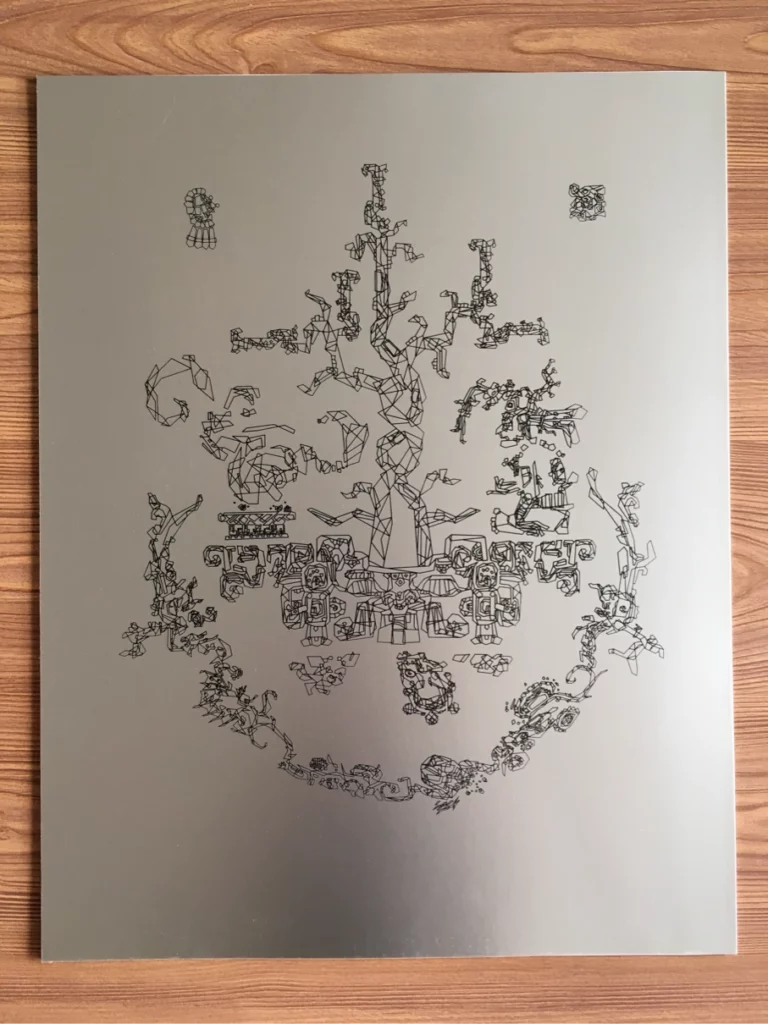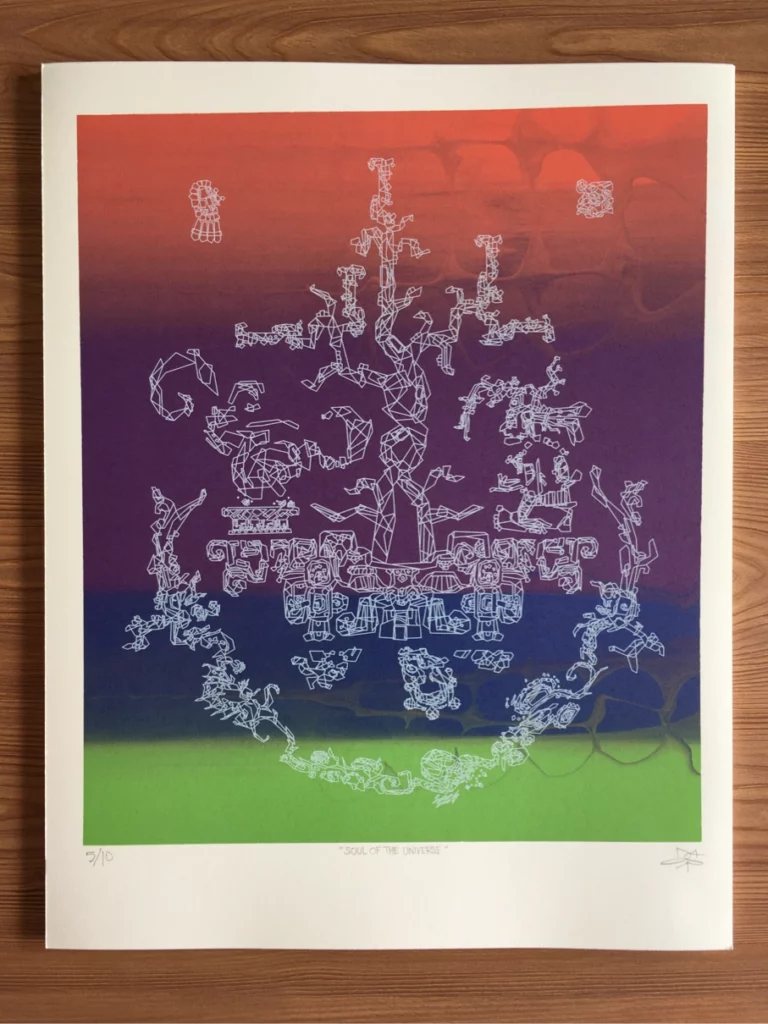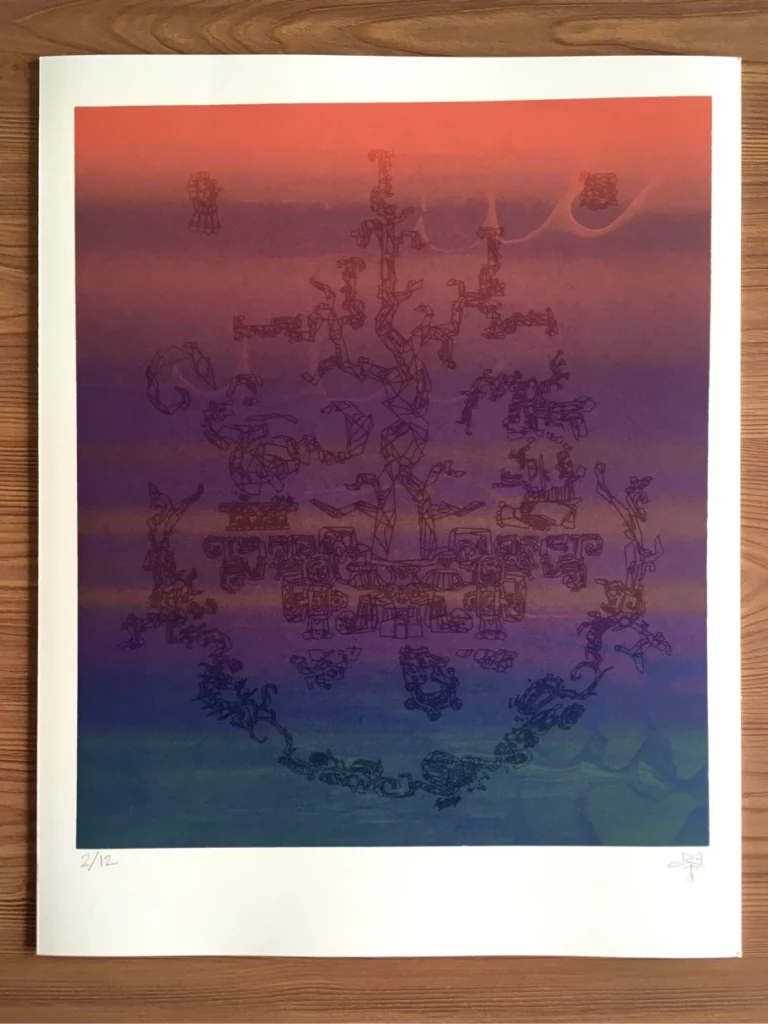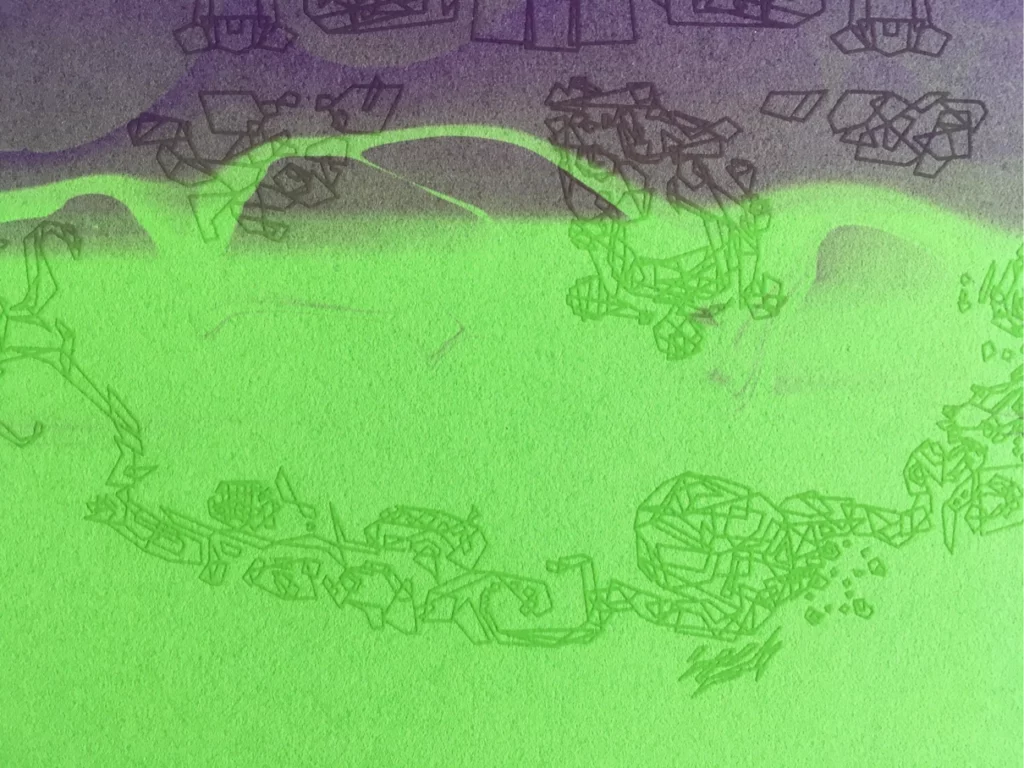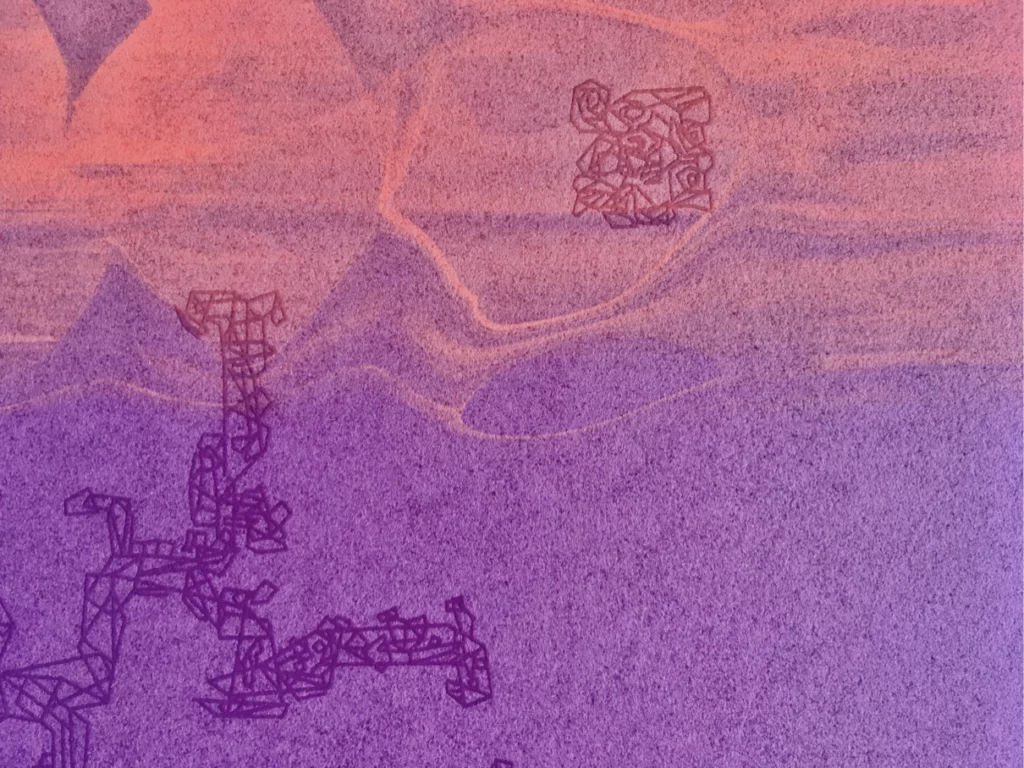Screenprinted at (3) Screen in Malmö, Sweden. All color backgrounds unique: with illustration overlaid in white ink or transparent lacquer. The textures were created spontaneously as the printing squeegee tossed inks together with each new pass. Illustration overlaid in black or white ink or transparent lacquer. My illustration is grounded in Maya cosmology, inspired by real artworks from archaeological remains.

Download the following explanation as a one-page pdf (landscape) in US Letter / A4 formats.
In brief, the Classic Maya (c. 250–925 CE) story of creation centers on a cosmic tree which erupts from a mountain floating on a primordial sea. Creation is not a past event but a cyclical process. Every day the world is reborn as the sun emerges from its night journey through the underworld. Venus, the morning and evening star, plays celestial counterpart to the sun as it makes this daily crossing. The powers of rebirth are replenished by divine sacrifice—burning the blood of trees (aromatic sap) or of deified humans or animals.
Different types of tree or vertical growth, most often maize, are associated with the world tree. The Popol Vuh tells how the Maize God descended to the underworld, was killed there, and later was reborn through the efforts of the Hero Twins.
The Maya traditionally understand depictions as real and literal enactions, not mere representations.
World tree: combines aspects from different sources
• widespread umbilical cord motif
• Palenque Palace and Temple panel of the Foliated Cross
(in general tree shape, bead strings, and leaves peeling off)
• repeated lobes of maize from mask over door at Uxmal
Coiling smoke: from sacrifices in the San Bartolo murals
(operating in a similar role beside the cosmic tree)
Sacrificial dish: from Yaxchilan Lintel 24
Seated figure: God D fused with Principal Bird Deity (share aspects like headdress), or Itzamna as often known
Scholars debate how these identities relate to each other, but they are central to Maya cosmology
Elements recombined from Dresden Codex and unprovenanced ceramics depicted in Simon Martin article listed in Sources
Underworld hemisphere band: from a ceramic vessel drawn and marked by Linda Schele, including personified lily, personified blood, jaws of the underworld. With substitutions from other ceramics (partial snake body and bat whose wings are studded with eyeballs)
Squat dragon head at left: from Yaxchilan Lintel 15, Chiapas, Mexico
Long skinny dragon head at right: from King Pakal’s sarcophagus lid at Palenque
Skull: from head of death god from Dresden Codex,
though here it can also represent the Maize God in death
Heads of ancestors: may represent the Hero Twins who descend to Xibalba, the underworld, and confront gods of death to revive the Maize God
Platform at base of tree: witz i.e. mountain/earth monster, a vast sentient creature which comprises all land, primarily sourced from Bonampak Stela 1
Upper left head: Sun deity, redrawn in The Blood of Kings
Upper right head: Venus deity, glyph composite from Palenque and Tikal
Further Reading
The Maya by Michael Coe
The Popol Vuh (e.g. mine translated by Allen Christenson, or another edition)
The Blood of Kings: Dynasty and Ritual in Maya Art by L. Schele and M. Miller
famsi.org and mesoweb.com
“The Old Man of the Maya Universe” by Simon Martin in Maya Archaeology 3, Precolumbia Mesoweb Press, 2015


